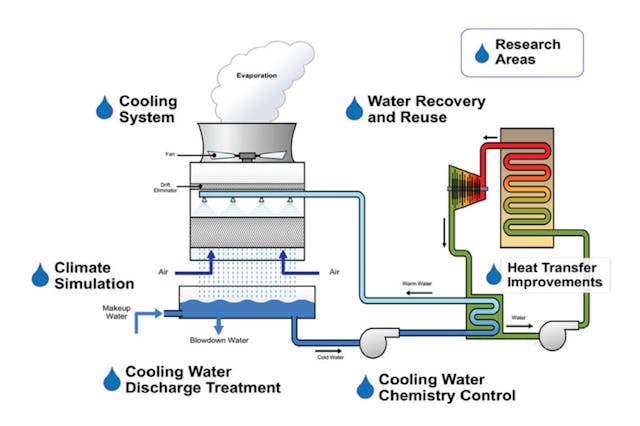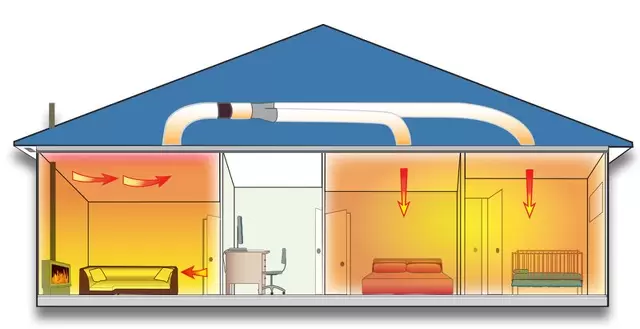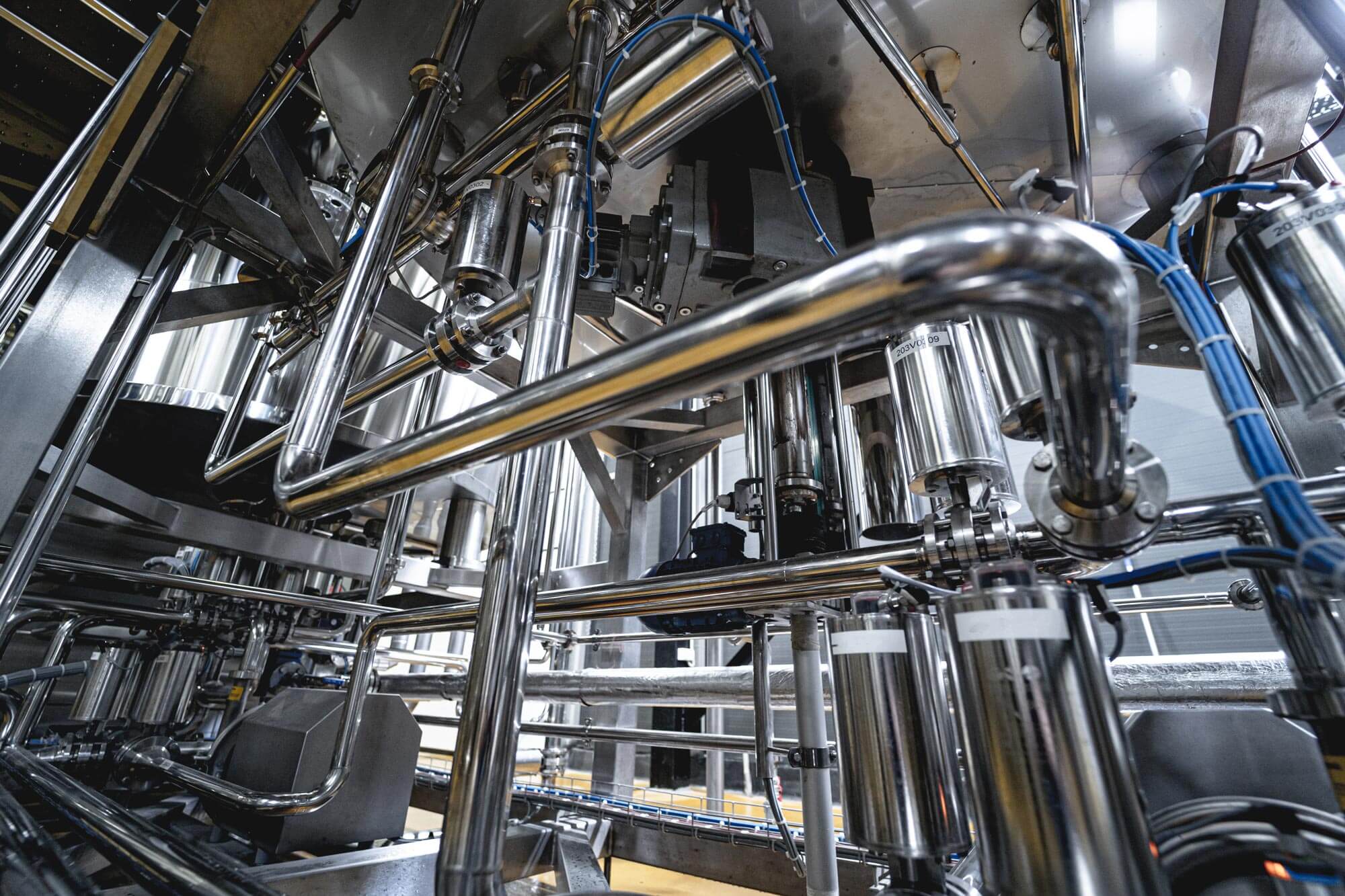Checklist: What to Know Before Implementing DVS Heat Transfer Systems in HVAC Systems
The Duty of Heat Transfer Solutions in Sustainable Energy Solutions for the Future
Heat transfer systems are necessary in the pursuit for lasting power options. They optimize thermal power monitoring, enhancing the efficiency of sustainable innovations. By using systems like radiation, convection, and conduction, these systems lessen power losses. Their duty in solar thermal and geothermal applications is specifically considerable. As advancements emerge, the possibility for additional developments elevates crucial questions about future power techniques. What growths will shape the landscape of sustainable power?
Recognizing Heat Transfer Solutions

The Relevance of Thermal Energy Administration
Reliable thermal energy monitoring is vital for optimizing power performance and reducing waste in numerous systems. By regulating temperature level and maximizing Heat transfer procedures, companies can markedly reduce energy intake and functional costs. Efficient monitoring involves the application of innovative modern technologies and methods that keep track of and control thermal problems within systems, making sure that energy sources are utilized efficiently. On top of that, proper thermal power monitoring contributes to decreasing greenhouse gas emissions, aligning with international sustainability goals. It additionally enhances system dependability and efficiency, bring about boosted item top quality and longer devices lifespan. Eventually, focusing on thermal power administration is an essential step in the direction of producing more sustainable energy options and fostering a responsible method to power consumption in domestic and industrial contexts.
Applications of Heat Transfer in Renewable Resource
While various renewable energy sources promise sustainability, the reliable application of Heat transfer plays a crucial duty in their efficiency. In wind energy systems, Heat transfer is used for generator element cooling, improving efficiency and long life. Geothermal power depends on reliable Heat exchange between the planet's subsurface and the liquid circulating in the system, making best use of power removal. Biomass power processes also take advantage of Heat transfer, as it helps in converting natural products into usable gas with pyrolysis and gasification. Additionally, in hydropower, keeping excellent temperatures in reservoirs can boost energy output. Each of these applications demonstrates the crucial importance of Heat transfer systems in enhancing sustainable power innovations, eventually adding to a more lasting energy future.
Enhancing Solar Thermal Power Effectiveness
As solar thermal power systems remain to advance, boosting their efficiency has become crucial for making best use of energy result. Breakthroughs in Heat transfer technologies, such as enhanced thermal storage space products and innovative Heat exchangers, play a considerable duty in enhancing performance. By utilizing advanced materials that have premium thermal conductivity, systems can move and capture Heat better. In addition, integrating monitoring systems that adhere to the sunlight's path assurances that collectors get ideal solar exposure throughout the day. Utilizing nanotechnology in solar absorbers can even more raise energy absorption prices. Additionally, incorporating automatic control systems helps take care of and control temperature levels power distribution efficiently, bring about reduced losses and enhanced general system efficiency. These enhancements pave the method for even more sustainable solar thermal power solutions in the future.
Geothermal Heating: A Sustainable Remedy
Geothermal home heating provides a feasible choice for lasting energy, using considerable environmental benefits via lowered greenhouse gas discharges. Its effectiveness and cost-effectiveness make it an appealing alternative to traditional home heating systems. Nevertheless, challenges connected to execution must be addressed to maximize its potential impact.
Environmental Benefits of Geothermal
Although typical heating techniques contribute significantly to greenhouse gas emissions, geothermal heating offers a compelling choice that lessens ecological impact. By utilizing the Earth's interior Heat, geothermal systems use an eco-friendly energy source, substantially minimizing reliance on fossil fuels. This method generates very little carbon exhausts, making it a cleaner alternative for domestic and industrial home heating. Additionally, geothermal systems promote power effectiveness, as they require less power contrasted to traditional heating unit. DVS Heat Transfer Systems. The application of geothermal power also assists in lowering air contamination, improving regional air quality and public health. As a sustainable option, geothermal home heating sustains environment change reduction initiatives, placing itself as a vital element in the shift towards a greener future
Performance and Cost-Effectiveness
Just how does geothermal home heating determine up in terms of effectiveness and cost-effectiveness compared to conventional home heating systems? Geothermal home heating shows premium efficiency, frequently accomplishing a coefficient of performance (POLICE) of 3 to 5, meaning it produces three to 5 systems of Heat for every system of electrical power eaten. This efficiency converts into lower operating expense, especially in areas with stable geothermal resources. First installation expenses can be higher than conventional systems; nonetheless, lasting cost savings on energy costs and reduced upkeep expenses can offset these ahead of time investments. Additionally, numerous federal governments incentivize geothermal systems via discounts and tax credit scores, enhancing their cost-effectiveness. In general, geothermal home heating arises as a financially feasible and sustainable choice to more standard heating services.
Implementation Difficulties and Solutions
Countless challenges can restrain the extensive execution of geothermal furnace, regardless of their clear advantages as a site link lasting energy option. High first installation prices usually discourage home owners and capitalists, making funding a significant barrier. Furthermore, the geographical constraints of suitable geothermal websites limit visit this website ease of access in particular areas. Local guidelines and allowing processes can also complicate job development, causing hold-ups. Public awareness and understanding of geothermal systems stay reduced, impeding acceptance. To address these obstacles, targeted education and learning campaigns can improve public understanding, while federal government motivations could minimize monetary worries. Collaborating with regional authorities to enhance laws might promote smoother task approvals, ultimately advertising the fostering of geothermal home heating as a feasible, sustainable power alternative.
Developments in Heat Transfer Technologies
Developments in Heat transfer modern technologies play an essential duty in improving energy performance and sustainability. Advanced Heat exchangers and stage modification materials go to the center of these growths, supplying substantial enhancements in thermal monitoring. These modern technologies not just enhance energy use yet likewise add to minimizing environmental impact in numerous applications.
Advanced Heat Exchangers
Advanced Heat exchangers play an important duty in boosting energy performance across numerous applications in lasting energy solutions. These tools assist in the transfer of Heat in between two or even more fluids, substantially minimizing energy intake in processes such as commercial home heating, cooling, and power generation. Advancements in materials and style, such as the use of nanofluids and portable arrangements, have actually caused boosted thermal performance and decreased dimension needs. In addition, innovations in digital surveillance and control systems permit enhanced procedure, further boosting effectiveness. By decreasing waste Heat and making the most of power recuperation, advanced Heat exchangers contribute to reduce carbon footprints and support the shift toward environmentally pleasant innovations. Their proceeded growth is important for accomplishing international energy sustainability goals.
Stage Adjustment Products
The combination of phase change products (PCMs) helpful resources right into Heat transfer innovations stands for a substantial innovation in power management and effectiveness. PCMs soak up and launch thermal power during their stage adjustments, enabling efficient temperature guideline in structure products and power systems. By saving excess Heat during top durations and launching it when need rises, PCMs add to load shifting and energy conservation - DVS Heat Transfer Systems. This capability enhances the efficiency of sustainable power systems, specifically in solar thermal applications. Furthermore, PCMs can improve the thermal comfort of indoor settings, reducing reliance on standard home heating and cooling down techniques. As developments in PCM formulations proceed to emerge, their role in lasting energy remedies is poised to expand, using appealing methods for future research study and application

Future Leads for Heat Transfer in Sustainable Energy
As the need for lasting power services remains to climb, the duty of Heat transfer systems is becoming significantly critical fit future modern technologies. Technologies in materials and styles are anticipated to boost efficiency in Heat transfer, decreasing power losses in various applications. The integration of innovative thermal storage space systems, such as stage adjustment products and thermochemical storage space, will certainly enable better administration of energy resources. Research study into nanofluids and biomimetic Heat exchangers may additionally enhance thermal performance. Additionally, the adoption of clever modern technologies will certainly enable real-time surveillance and flexible control of Heat transfer procedures. These improvements are poised to substantially add to the total performance and sustainability of power systems, leading the way for a more energy-efficient future.
Frequently Asked Inquiries
Just How Can People Carry Out Heat Transfer Systems at Home?

People can carry out Heat transfer systems in your home by installing energy-efficient devices, making use of radiant heat, and optimizing insulation. These procedures enhance power efficiency, minimize prices, and promote lasting practices in residential settings.

What Are the Costs Connected With Setting Up Heat Transfer Solutions?
The expenses related to setting up Heat transfer systems differ widely, typically including equipment, installation labor, and maintenance. Aspects such as system type, home dimension, and neighborhood laws substantially affect the total expense included.
Are There Government Incentives for Heat Transfer System Installations?
Federal government motivations for Heat transfer system installations differ by region and can include tax rebates, credits, and gives. These economic benefits intend to motivate adoption, inevitably promoting power effectiveness and decreasing ecological effect within communities.
Exactly How Do Heat Transfer Systems Effect Power Bills?
Heat transfer systems notably affect energy costs by enhancing power effectiveness. By improving the transfer of Heat, these systems lower power intake, bring about lower utility expenses and producing a much more sustainable approach to power management.
What Maintenance Is Needed for Heat Transfer Solutions?
Upkeep for Heat transfer systems consists of routine inspections, cleansing of elements, checking fluid degrees, ensuring proper insulation, and replacing used parts. These tasks help keep performance, prevent breakdowns, and extend the system's operational life-span.
These systems facilitate the motion of thermal power from one tool to another, allowing the transfer of Heat for home heating, air conditioning, or power generation functions. Geothermal power relies on reliable Heat exchange in between the earth's subsurface and the fluid circulating in the system, making the most of power extraction. Furthermore, geothermal systems promote energy effectiveness, as they require much less power contrasted to conventional home heating systems. Advanced Heat exchangers play a necessary role in improving power performance throughout various applications in sustainable power options. Heat transfer systems significantly affect power bills by enhancing energy effectiveness.